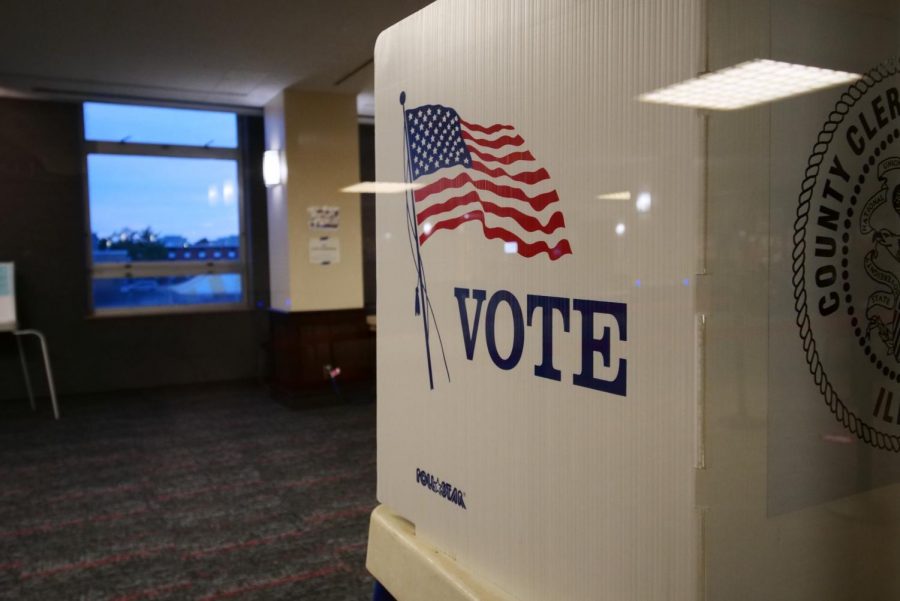What students need to know about the ‘fair tax’ amendment
A voting booth in the Holmes Student Center.
October 29, 2020
DeKALB – On the ballot for the 2020 general election is an amendment to Section 3 of Article IX of the Illinois Constitution, also known as the fair tax amendment. It’s a proposal to make Illinois’ current income tax look more like the federal income tax.
The current flat rate income tax that Illinois has is 4.95%. All residents of Illinois, regardless of income, pay that 4.95% income tax. With the proposed amendment, the income tax rate would change to a range between 4.75% and 7.99% based on a person’s income, according to Ballotpedia.
In Illinois, there is a flat income tax rate for everyone. The federal income tax, on the other hand, has multiple rates because it is considered a progressive income tax. Iowa, Wisconsin and Minnesota are a few neighboring states who already have this progressive income tax, Kurt Thurmaier, chair of the Department of Public Administration, said.
“The key concept is that people who have less money to pay should pay less tax, and people who have greater ability to pay should pay proportionally more of the tax,” Thurmaier said.
A key thing to remember is people are only taxed the extra amount as their income increases, Thurmaier said. Thurmaier gave a hypothetical scenario to explain how this progressive income tax would work.
“So, let’s say a student has a $20,000 income, so their tax rate is, say, 3%,” Thurmaier said. “But, then they take on a second job and now their income is $40,000. The income tax is 4%. So, the full 4% is only taxed on that second $20,000. It’s not taxed on all of the $40,000.”
A small change in the rate for higher taxpayers yields a lot more money for the state, Thurmaier said.
“The state can use that money to spend on its highest priority, which is education,” Thurmaier said. “If it’s allocated to higher education, it means that student tuition can be kept from rising. If it’s spent on K-12, it means that property taxes can actually be halted or even reduced because the state will pay more of K-12 education costs.”







